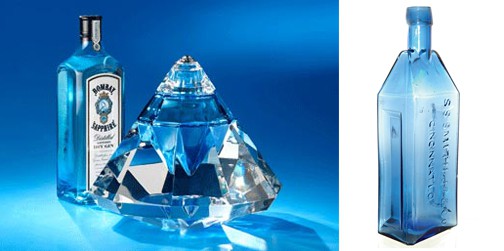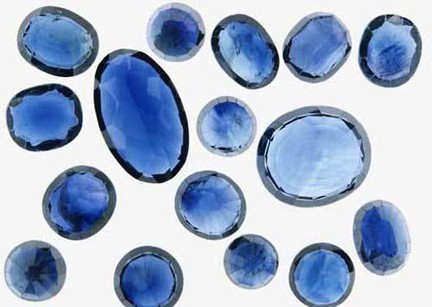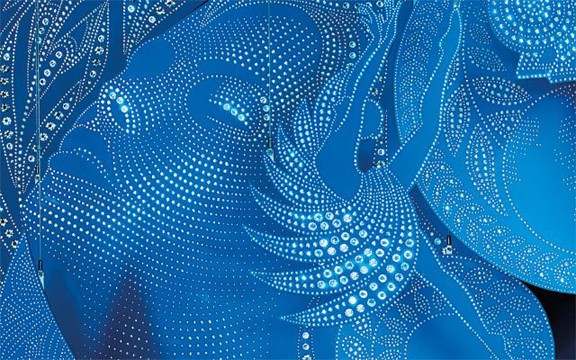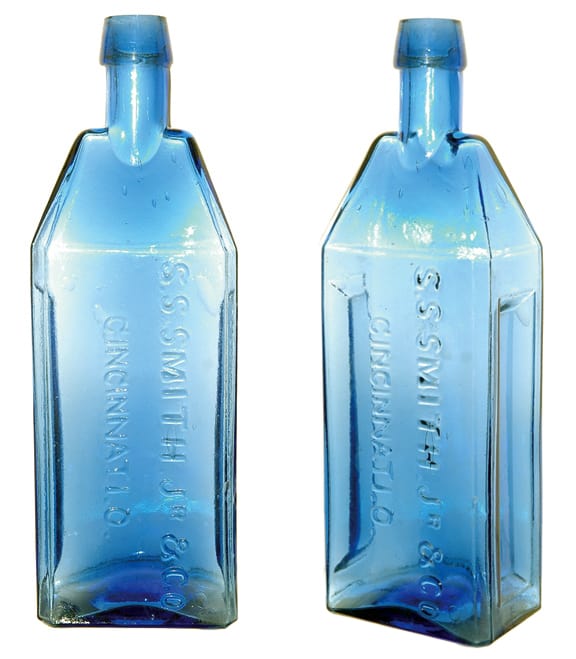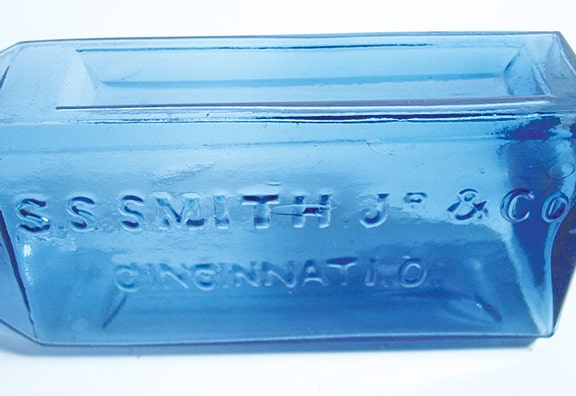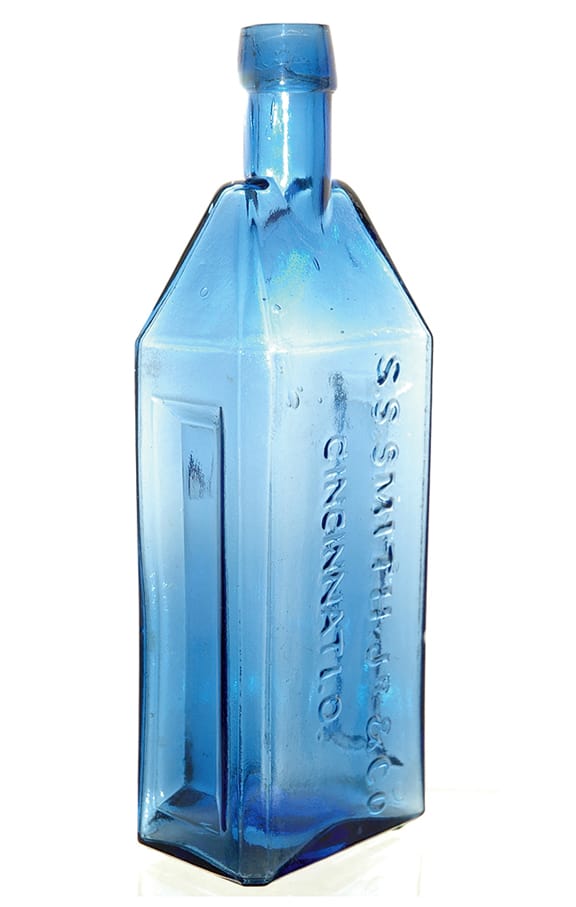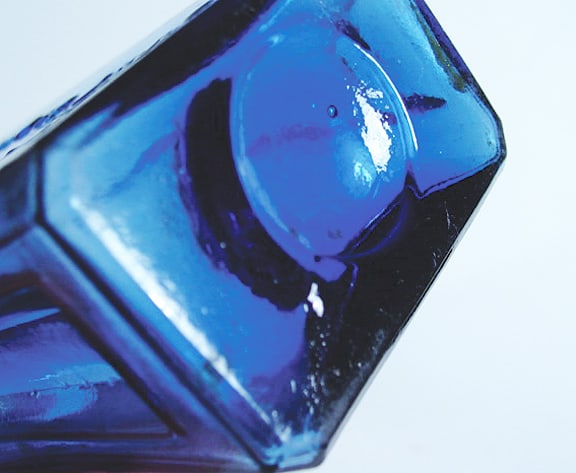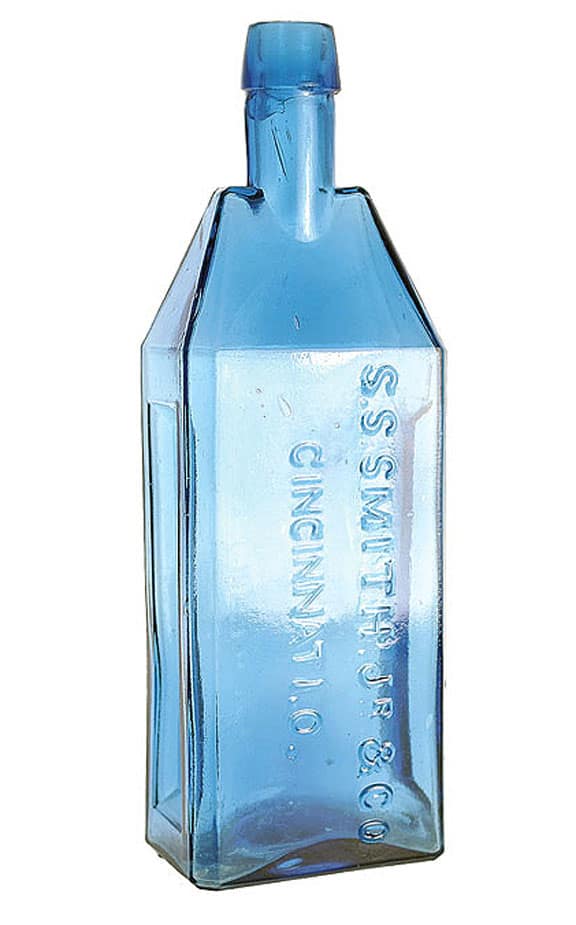S.S. SMITH. JR & CO / CINCINNATI. O. – A Semi-Cabin in Sapphire
Sometimes life repeats itself…
26 March 2012 (R•121218 – Info on Samuel Sherwood Smith) (R•040119 – Aprill example)
![]() In this post I would like to explore the commonalities between the beautiful coloration and faceting of blue Sapphire gems, the S. S. SMITH JR & CO. figural, rectangular semi-cabin (that probably contained a bitters, whiskey or rye) from Cincinnati, Ohio and Bombay Sapphire Gin (my preferred Gin).
In this post I would like to explore the commonalities between the beautiful coloration and faceting of blue Sapphire gems, the S. S. SMITH JR & CO. figural, rectangular semi-cabin (that probably contained a bitters, whiskey or rye) from Cincinnati, Ohio and Bombay Sapphire Gin (my preferred Gin).
The chamfered bottle design of the S. S. Smith certainly reminds me of the gem we are familiar with and the Bombay Gin bottle. Sapphire is a color that responds well to light and can refract lighter and darker tones that are gorgeous. Who wouldn’t want to pick this bottle off the shelf of a merchant in 1870 or so. I know I can usually spot this color and brand in a field of many behind a bartender now.
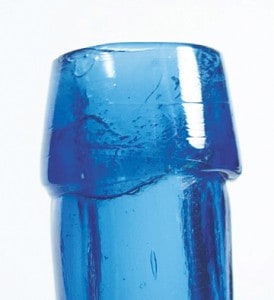 Sapphire is the official birthstone for the month of September as adopted by the American National Association of Jewelers in 1912. It is also one of the birth stones for the Zodiac signs of Pisces, Taurus, Virgo and Sagittarius. Sapphire is given as a gem for the 5th, 23rd and 45th wedding anniversaries while a star sapphire is given on the 65th wedding anniversary.
Sapphire is the official birthstone for the month of September as adopted by the American National Association of Jewelers in 1912. It is also one of the birth stones for the Zodiac signs of Pisces, Taurus, Virgo and Sagittarius. Sapphire is given as a gem for the 5th, 23rd and 45th wedding anniversaries while a star sapphire is given on the 65th wedding anniversary.
Sapphire is the non-red variety of corundum (the red variety of corundum is ruby). A 9.0 on the Mohs scale of hardness, sapphire is the second hardest natural mineral.
Blue is by far the most popular color for sapphires, but they can be almost any color, including yellow, green, white, colorless, pink, orange, brown, and purple. Padparadscha is the name for a rare orange-pink variety of sapphire and has a higher value than blue sapphires.
In the Glass Works Auction 94 this past March 2012 (Ides of March Auction) (see picture below) one of these S.S. Smith gems showed up. An example has not made an appearance for years. These are really tough to come by. I purchased my example in 2006 (see pictures below) in a private transaction from an East Coast dealer and auctioneer. I wish I had more information on the bottle such as a label or advertising but alas, I can not find a thing. I have heard rumors of an amber example. [Updated with amber information below] Hopefully this post will ferret out some more information from my collector friends.
Glass Works Auction 94 “The Ides of March” Auction. Closed 19 March 2012.
This example sold for $4,312.50 including auction house premium. Most examples have sold historically (I have seen two or three including my own) for around $6,500 meaning someone really got a deal.
148. “S.S. SMITH. JR & CO / CINCINNATI. O.”, (Denzin-SMI-21), Ohio, ca. 1870 – 1880, medium cobalt blue semi-cabin, 9 5/8”h, smooth base, applied tapered collar mouth, perfect condition. For those of you who collect these popular semi-cabin bottles, this is a hard one to find, and gives you a chance to add some nice color to the collection!
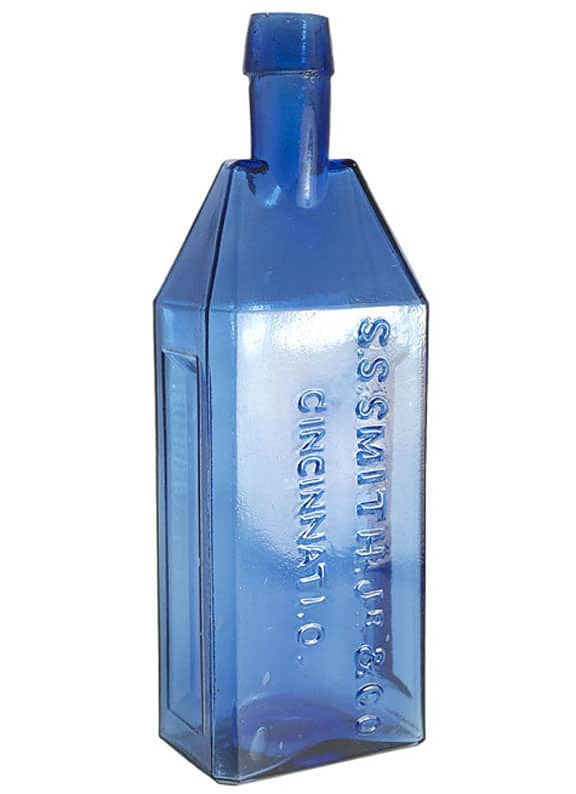
“S.S. SMITH. JR. & CO / CINCINNATI, O.”, (Denzin SMI-21), Ohio, ca. 1865 – 1875, medium cobalt blue semi-cabin, 9 3/4”h, smooth base, applied mouth, about perfect (a few light scratches on the label panel). We sold this bottle in 1997 at the FOHBC auction in Jacksonville, Florida. – Glass Works Auctions – Auction #98

Lot: 54 “S.S. Smith. Jr.. & Co / Cincinnati.O.” Figural Whiskey Bottle, America, 1860-1870. Rectangular modified cabin form, medium cobalt blue, applied sloping collared mouth – smooth base, ht. 9 5/8 inches. Attractive form and color. Fine condition. Dr. Charles and Jane Aprill collection. – The Aprill Collection: Blue Bottles & Glass, Session I Premier Auction 172 – HECKLER
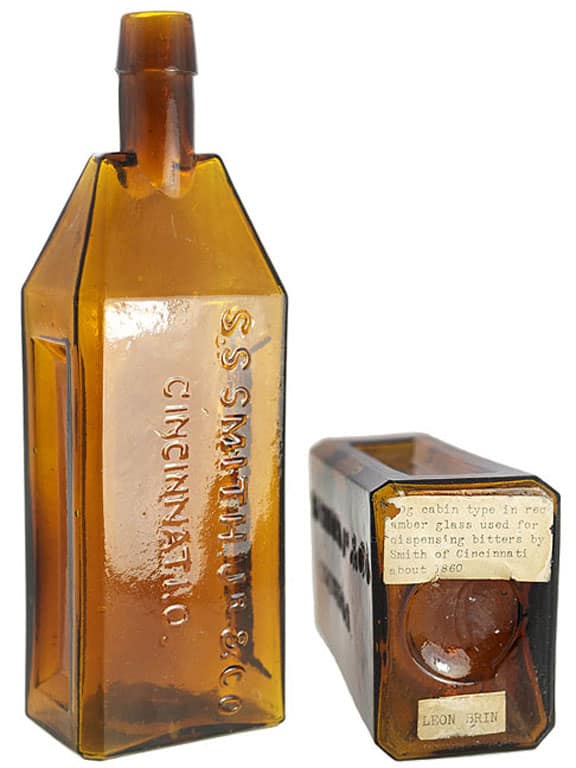
“S.S. SMITH. JR. & CO / CINCINNATI, O.”, (Denzin SMI-21), Ohio, ca. 1865 – 1875, golden amber simi-cabin, 9 5/8”h, smooth base, applied mouth, perfect conditino. Nice glass whittle, and considerably harder to find than it’s blue brother. – Glass Works Auctions – Auction #98
Samuel Sherwood Smith
 Samuel Sherwood Smith was born on August 30, 1803 in Solon, Cortland County, New York. He was the son of Levi Smith and Hannah Holland and one of 11 boys from the couple. One newspaper article said he was the smallest, but lived the longest. He certainly accomplished a great deal in his life. He was married first to Margery (?) Smith in 1826 and then Elizabeth Andress Smith in 1832. Two of his children, S. S. Smith Jr. and Edwin Forrest Smith would eventually join him in the liquor business.
Samuel Sherwood Smith was born on August 30, 1803 in Solon, Cortland County, New York. He was the son of Levi Smith and Hannah Holland and one of 11 boys from the couple. One newspaper article said he was the smallest, but lived the longest. He certainly accomplished a great deal in his life. He was married first to Margery (?) Smith in 1826 and then Elizabeth Andress Smith in 1832. Two of his children, S. S. Smith Jr. and Edwin Forrest Smith would eventually join him in the liquor business.
By 1820, Samuel Smith is found residing in Cincinnati, Ohio. U.S. Federal Census records do not list an occupation each decade until 1860 where he is listed as a merchant. I suspect Smith was a liquor dealer or some type of general merchant many of those years. That same 1860 federal record is missing S.S. Smith, Jr. who would have been 26 years old or so at the time. Edwin F. Smith was 18 years old at the time.
An article in the January 1995 edition of Antique Bottle & Glass Collector magazine. mentions that the Booth family, part of an acting group, visited the Smith family in 1848 on an acting tour. Sol Smith, one of Samuels brothers, was an actor. John Wilkes Booth, then ten years old, was there, as well as the ten year old S.S. Smith Jr.
In 1862, we see the first listing of S.S. Smith & Company comprising of Samuel S. Smith and his son S.S. Smith, Jr. They are selling liquors at 56 West 2nd Street in Cincinnati. By 1869, it is S.S. Smith, Jr. & Company, Liquors located at No. 34 E. 2nd Street. They were dealers in fine bourbon and rye whiskeys. His partners were his sons Samuel and Edwin and Benjamin Ehrmen who had married his daughter Louise. Samuel Smith Sr. had moved on from the business by then and was now the president of a life insurance company.
In 1871, the following newspaper advertisement (below) appears in The Cincinnati Enquirer for S. S. Smith Jr., & Co. (S. S. Smith Jr., Edwin F. Smith and Benj. F. Ehrman) selling Wholesale Liquors at 58 W. Second Street in Cincinnati. Notice the “Proprietors of the Celebrated Morning Call Bitters.” Could this be the product in the bottle? Actually, I do believe this. This semi-cabin bottle shape now also found in amber, is basically the same form as many other bitters. Whiskey, rye and other spirits were typically bottled in round cylinder bottles. The only thing that casts doubt on this idea is another Morning Call Bitters being sold in Cincinnati around the same time period.
Read: A Morning Call Bitters Comparison
Samuel S. Smith (Senior) would continue in the insurance business. In 1876 and 1877, he is listed as the president of the Cincinnati Equitable Fire Insurance Company. He would die in 1885. Some type of fall hastened his death. His son, S. S. Smith Jr. would continue the business until 1876 or so. The following year he is listed as a travel agent.
Read more: S. S. Smith just Dug
Read More: Cincinnati Bitters Spotting – A cross reference of directories

